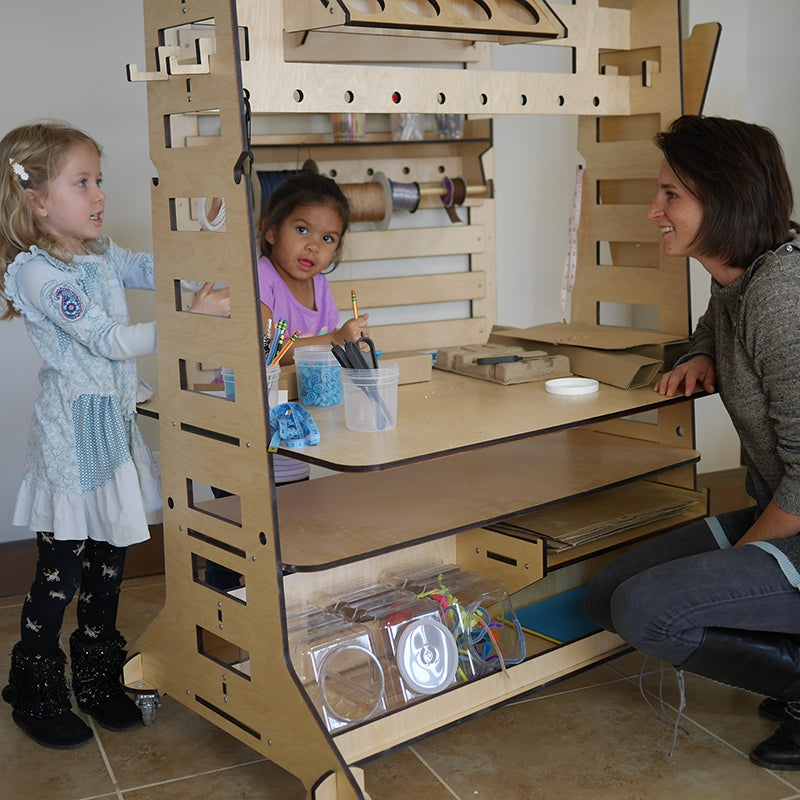
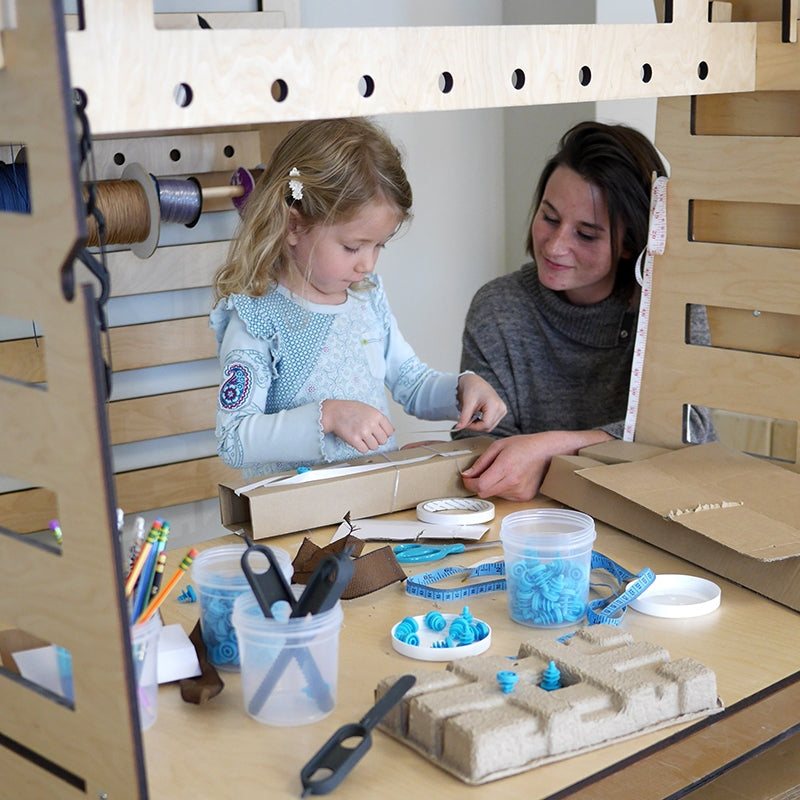
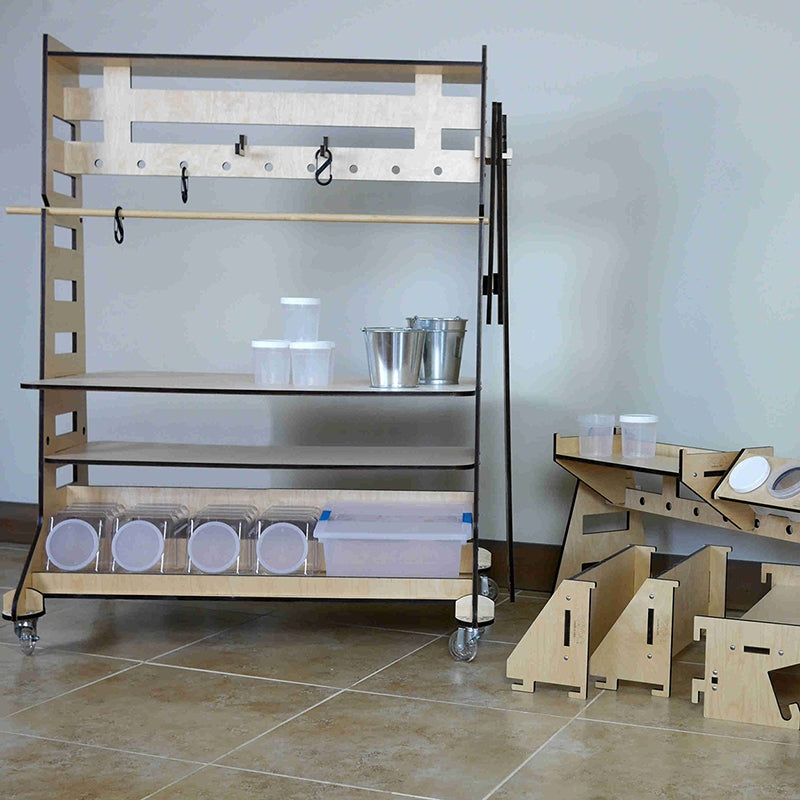
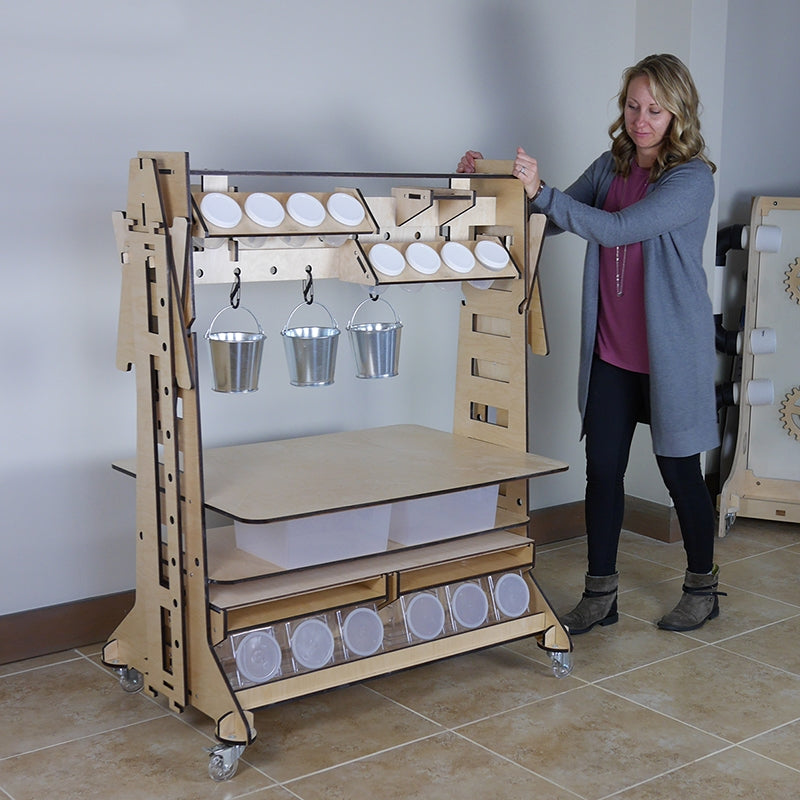
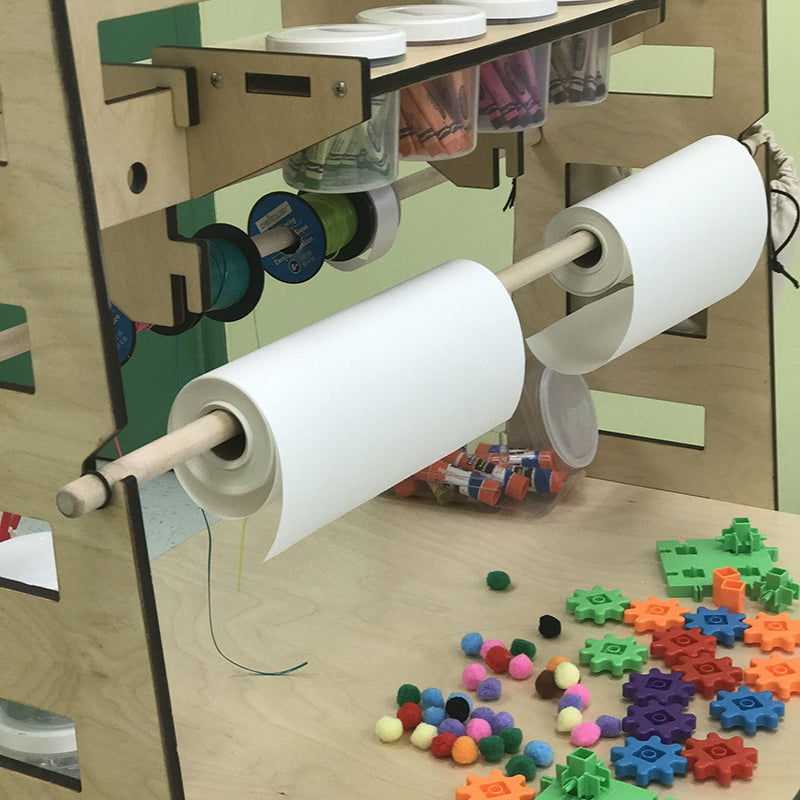
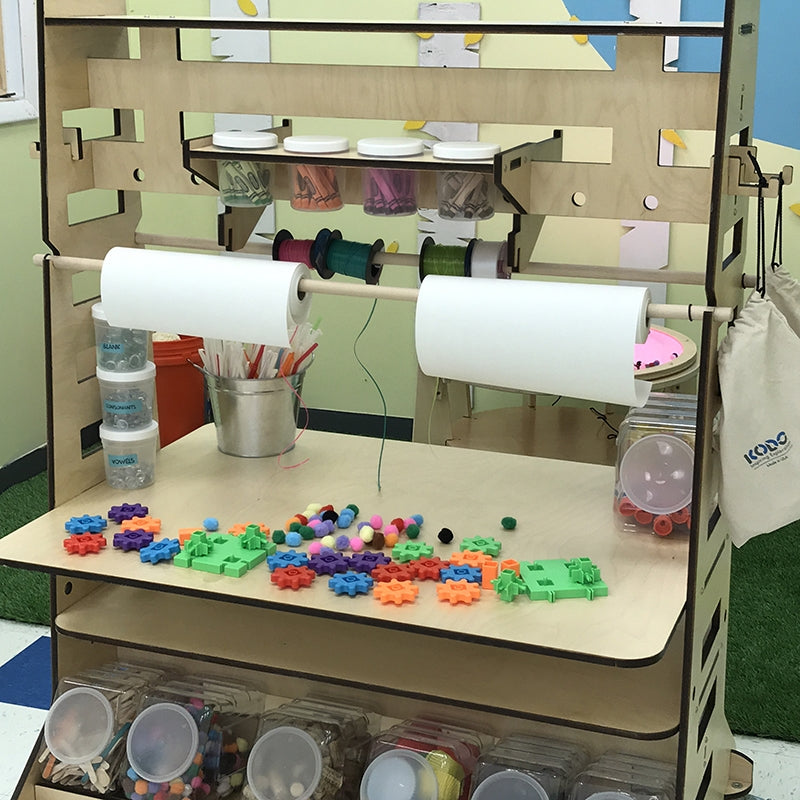
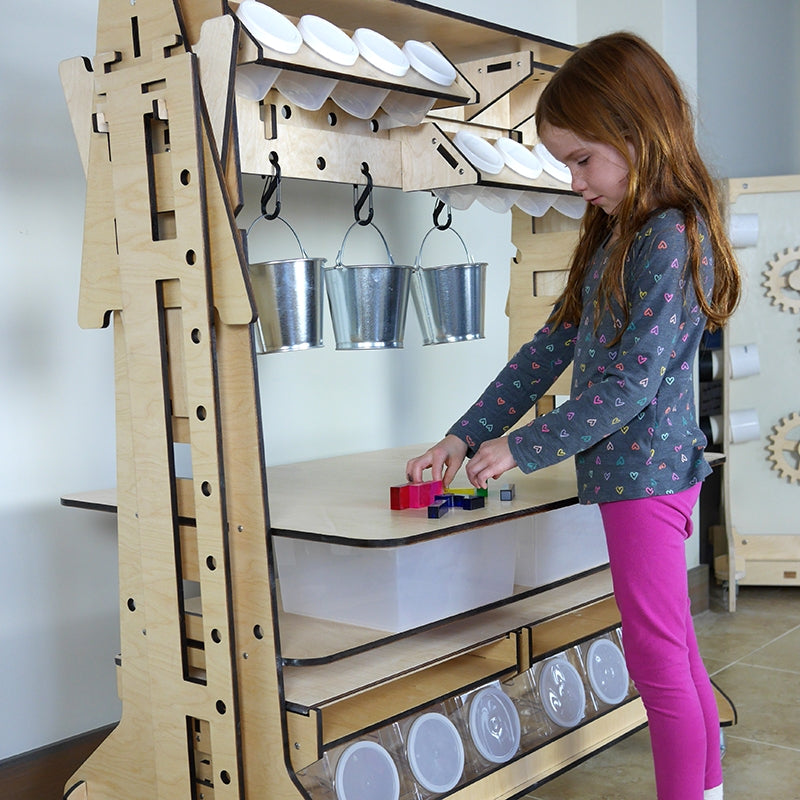
Mobile Maker Station
SKU: 103815
Description
Making is not location specific, so make it mobile! Kodo’s Mobile Maker Station provides flexibility in where and how a Maker session can occur!
This portable storage and workspace allows for inspired making anywhere! Several configurations create ample customization of the work space to accommodate your mighty makers. The two saw horses can be stand alone, attached to the mobile table, or connected together to create an inspirational space. Unique slat wall sides and shelves allow for ample storage opportunities for tools, materials and loose parts.
This versatile piece works independently or in conjunction with the other Maker pieces for ever-expanding Maker possibilities.
Includes:
- Mobile Maker Station On Casters
- Wood Grid Table Top
- 2 Sawhorses
- 4 Storage Hooks
- 4 Shelf/Table Top Holders
- Slat Wall Tool Holder
- Spool Holder
- 2 Cup Holders
- 2 Large Storage Containers
- 8 Small Cups
- 12 Stackable Storage Containers
- 3 Carabiners
- 3 Metal Pails
The Mobile Maker Station is 44 inches long x 28.5 inches wide x 56 inches tall. This product requires assembly.
Appropriate for ages 3+
Complete it with these